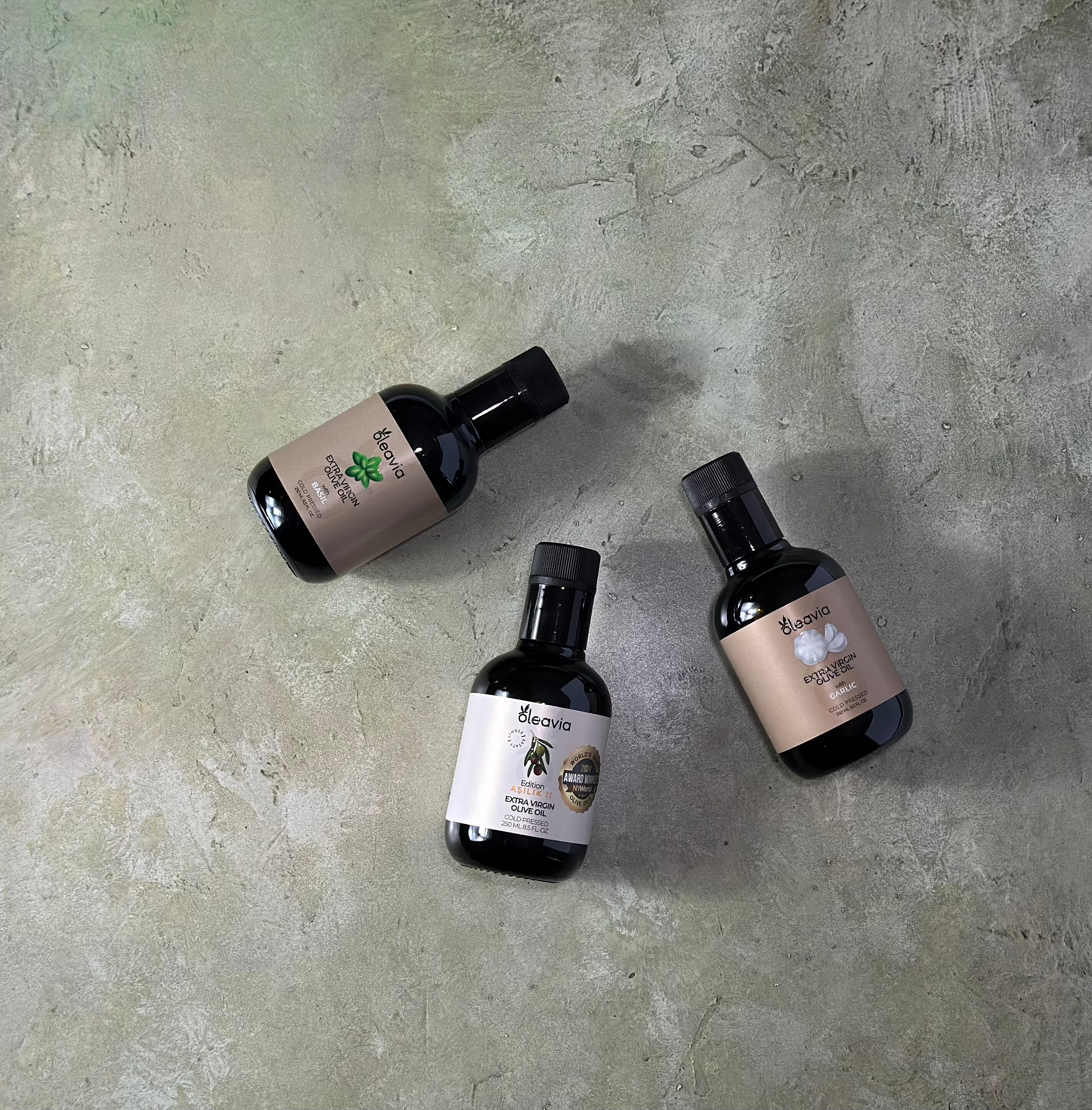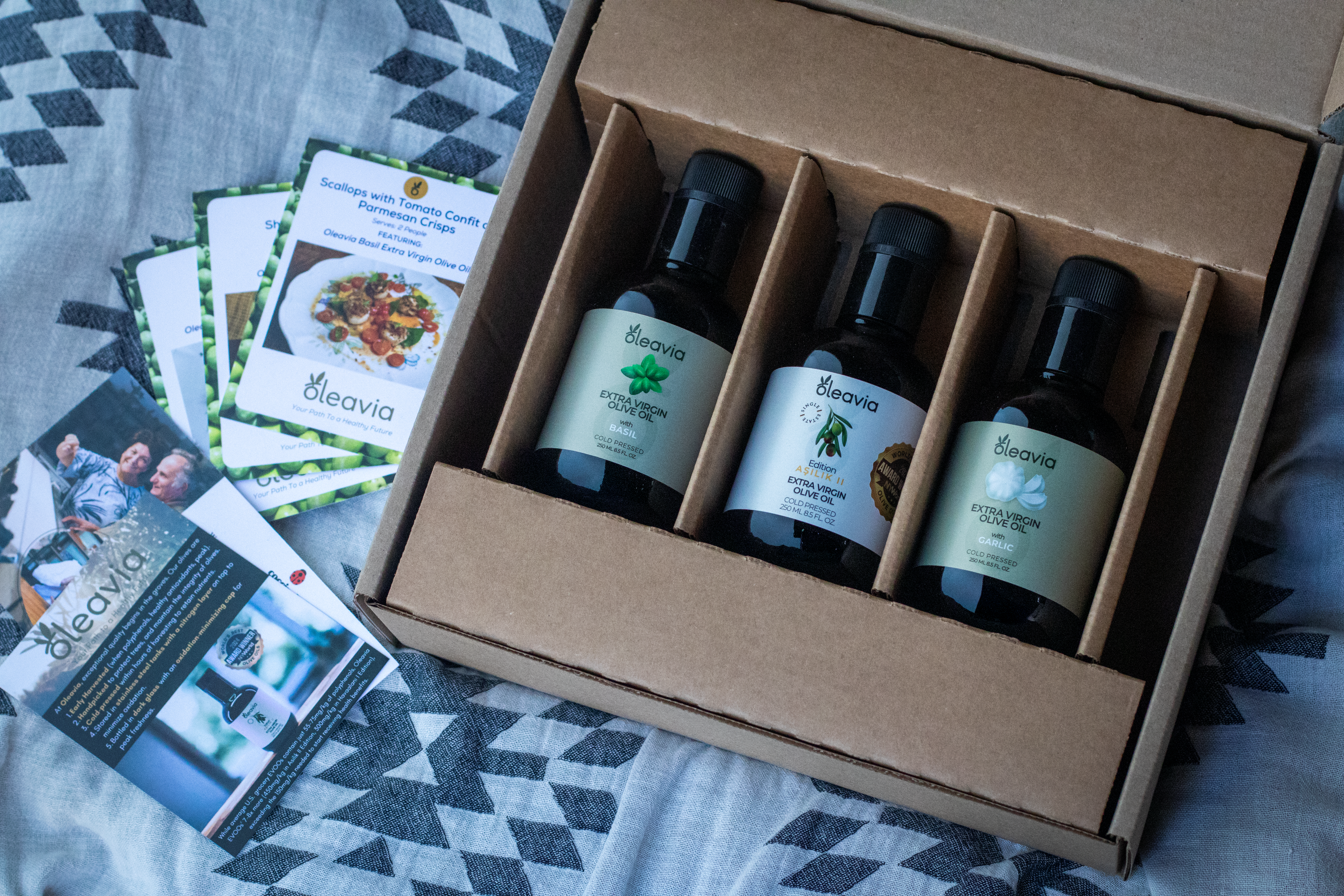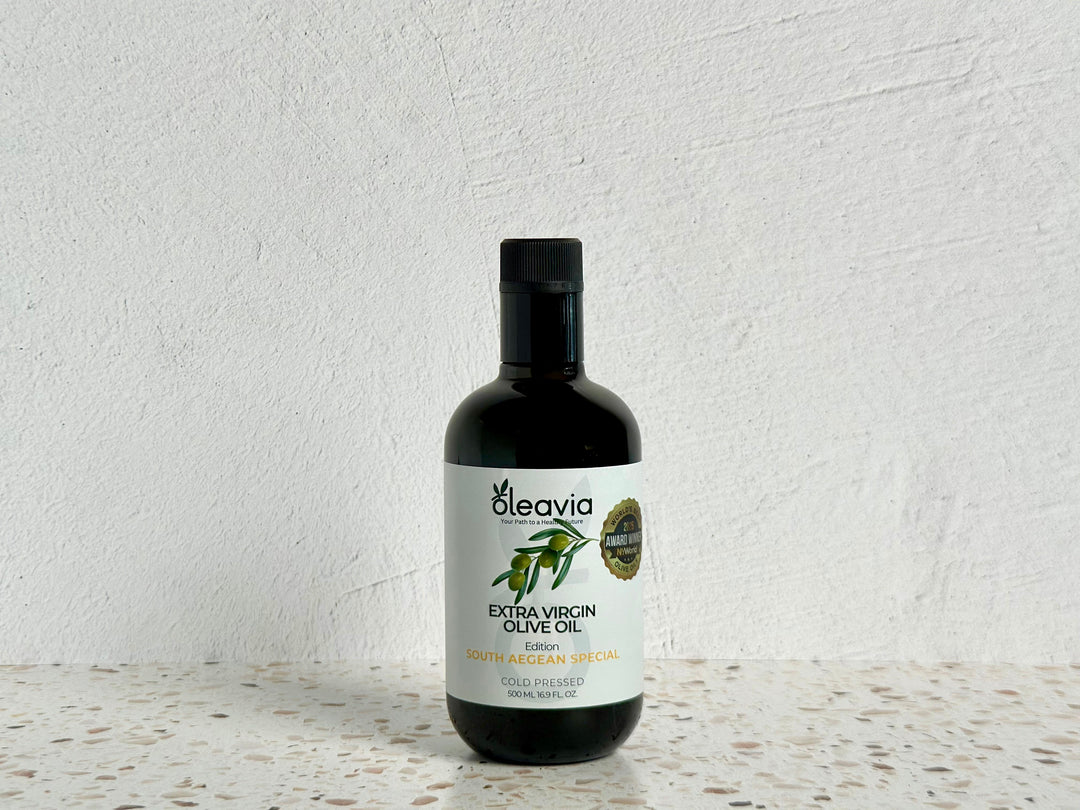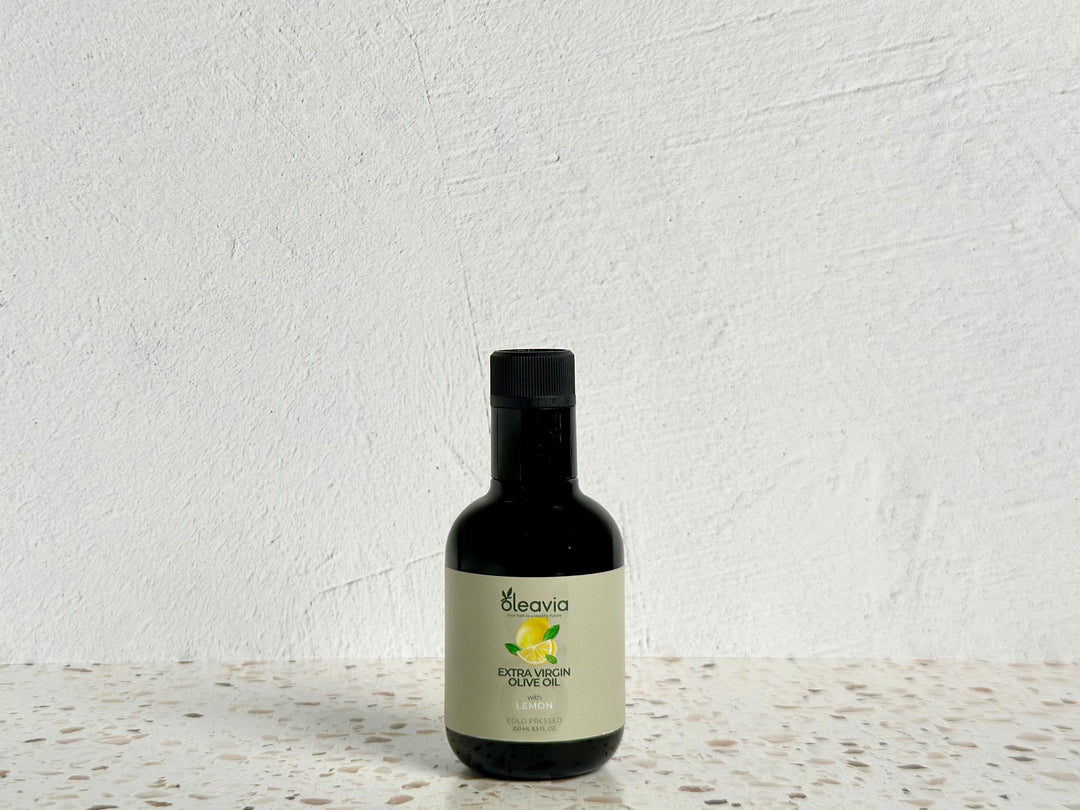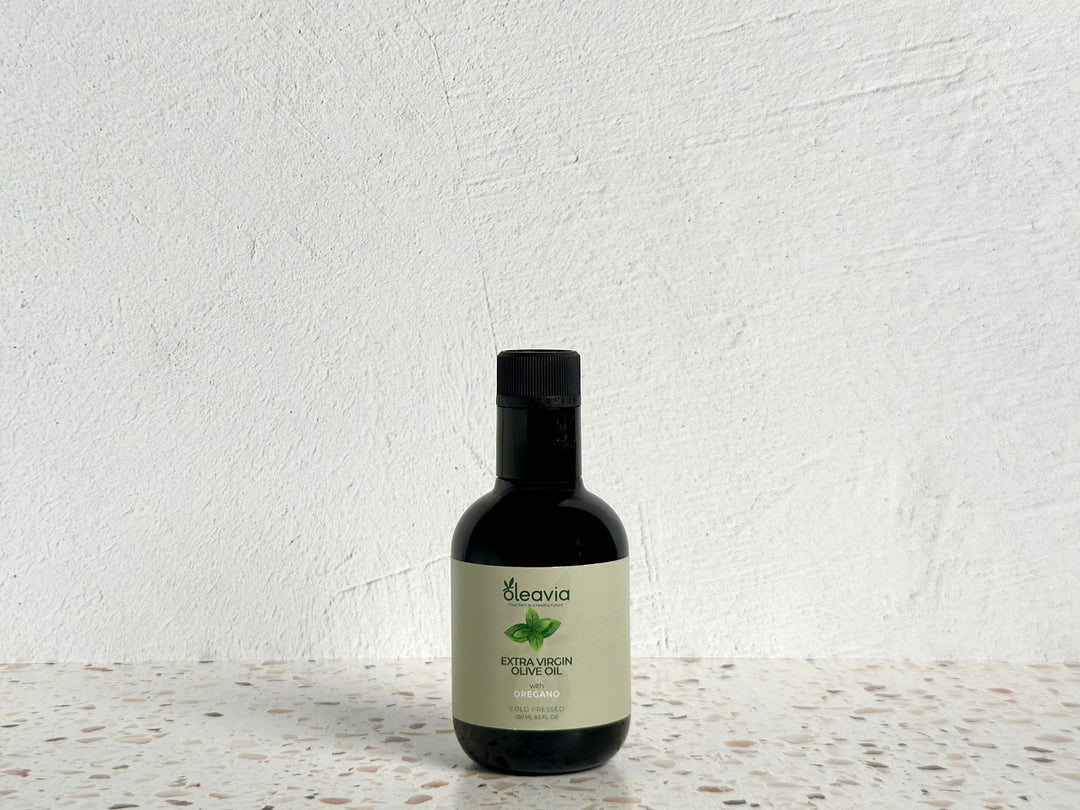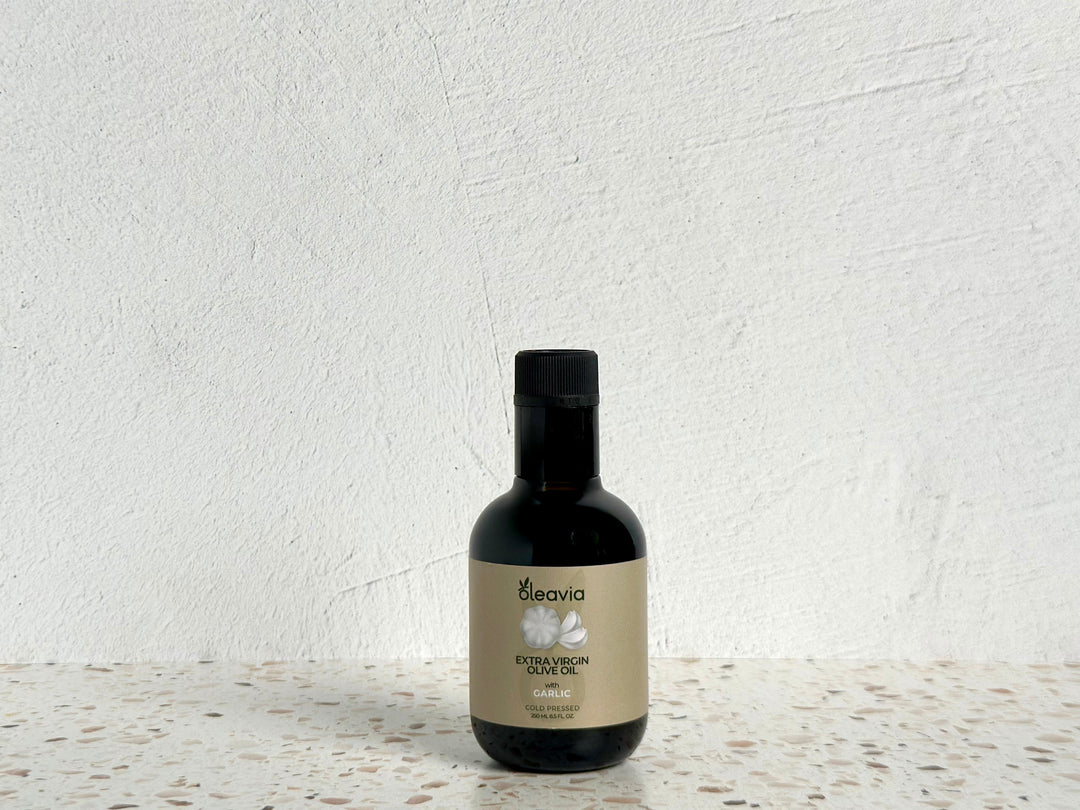Fused vs. Infused: A Tale of Two Oils
Flavored olive oils can transform a dish — a hint of garlic, a touch of lemon, or a spark of red pepper. But how those flavors make their way into the oil changes everything.
Infused: An Addition After the Fact
Infused oils are made by soaking herbs, garlic, or spices in finished olive oil. The flavor seeps in over time, but it’s difficult to control:
-
Leave the herbs too long, and the flavor becomes harsh and overpowering.
-
Remove them too soon, and you’re left with a weak aftertaste that feels separate from the oil.
-
Because ingredients are added after pressing, the oil is more prone to oxidation, which can shorten its freshness.
Infused oils can be enjoyable, but the flavor often feels like it was added after the fact — because it was.
Fused: Two Becoming One
Fused oils take a different path. Fresh herbs or citrus are cold-pressed together with the olives at the very same time.
-
Their natural oils blend directly into the olive oil during pressing, creating a flavor that is bright, fresh, and perfectly balanced.
-
Instead of sitting on the surface, the flavor becomes part of the oil itself.
-
One of our customers described it best: “It’s like a marriage — two becoming one.”
That harmony is what makes fused oils so special.
Why It Matters
Think of the difference between tossing garlic into a finished dish versus cooking it gently with the other ingredients from the start. One adds flavor on top; the other weaves flavor all the way through. That’s the magic of fused olive oil.
At Oleavia, every flavored oil we create is fused, never infused — with one exception: our Black Truffle EVOO. (You can read more about that in its product description.)
The result is flavor in perfect harmony — super fresh, balanced, and exactly how it’s supposed to taste.



